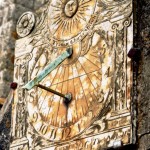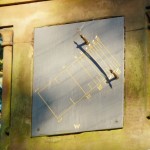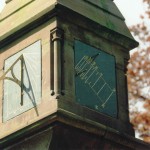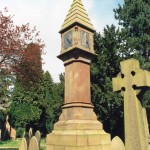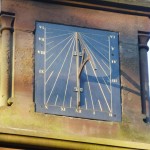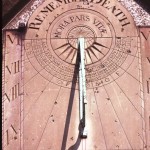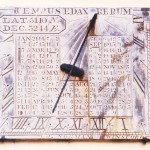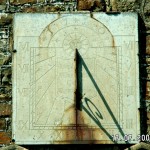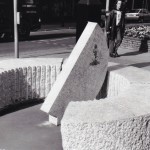
Near the cenotaph in the centre of the town stands the sturdy stone arc of a sundial with a correspondingly stout gnomon, interestingly but correctly placed. The gnomon carries a small insignia of the Royal Corps of Signals. It is a little short of the real length needed at the summer solstice, but makes for a pleasing unity in the design. Hour markers and lines only are shown.
A plaque on the side reads: ‘Presented by the Army Apprentices College to the Borough of Harrogate to commemorate the close association between college and town 1947 – 1996’, and the name ‘Archer’ is the only inscription to be found. The dial was presented when the college closed in 1996.
The chapter ring is made in the form of an arc of a circle of about 240 degrees, being 600mm high and with an overall diameter of 3300mm. It was made in three massive sections, placed an inch apart, and David Young was told that it was placed in position using ice cubes to align it!
